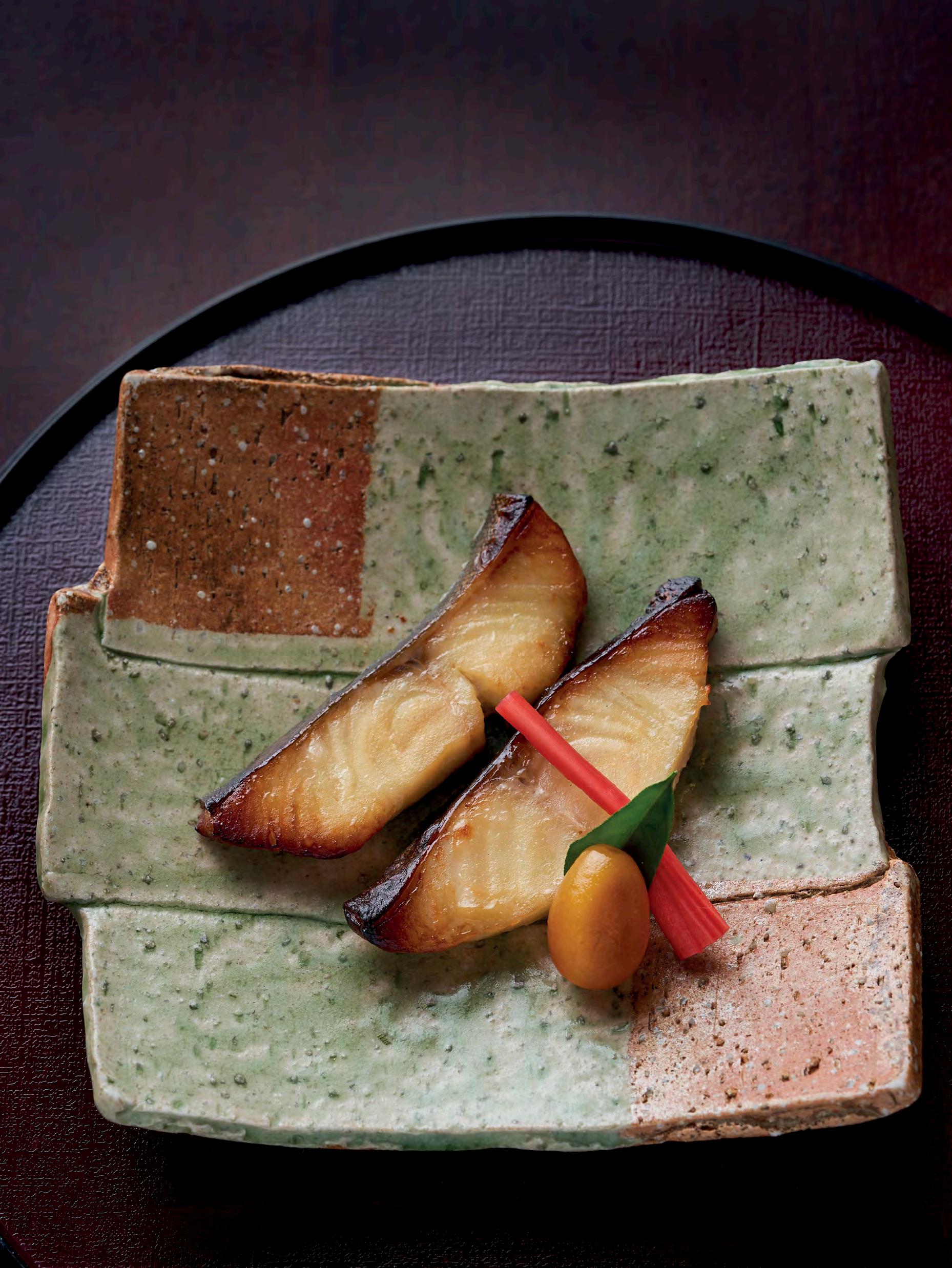
6 minute read
150 Years Grand Hotel Vienna
Beautiful to look at and delicious on the palate. For the saikyo yaki, fish filet is marinated in miso paste and then grilled. Young pickled ginger gives it an additional kick. Wunderschön anzusehen und köstlich am Gaumen. Für das Saikyo Yaki wird Fischfilet in Misopaste mariniert und dann gegrillt. Junger eingelegter Ingwer gibt den Kick dazu.

Advertisement

DAS RESTAURANT UNKAI IM GRAND HOTEL WIEN BIETET AUSGESPROCHEN AUTHENTISCHE JAPANISCHE KÜCHE. EINE FERNREISE, OHNE DEN FUSS VOR DIE STADT SETZEN ZU MÜSSEN. THE UNKAI IN VIENNA’S GRAND HOTEL WIEN OFFERS VERY AUTHENTIC JAPANESE CUISINE. A LONGDISTANCE JOURNEY WITHOUT HAVING TO SET FOOT OUTSIDE THE CITY.
TEXT & PHOTOS: HERBERT LEHMANN
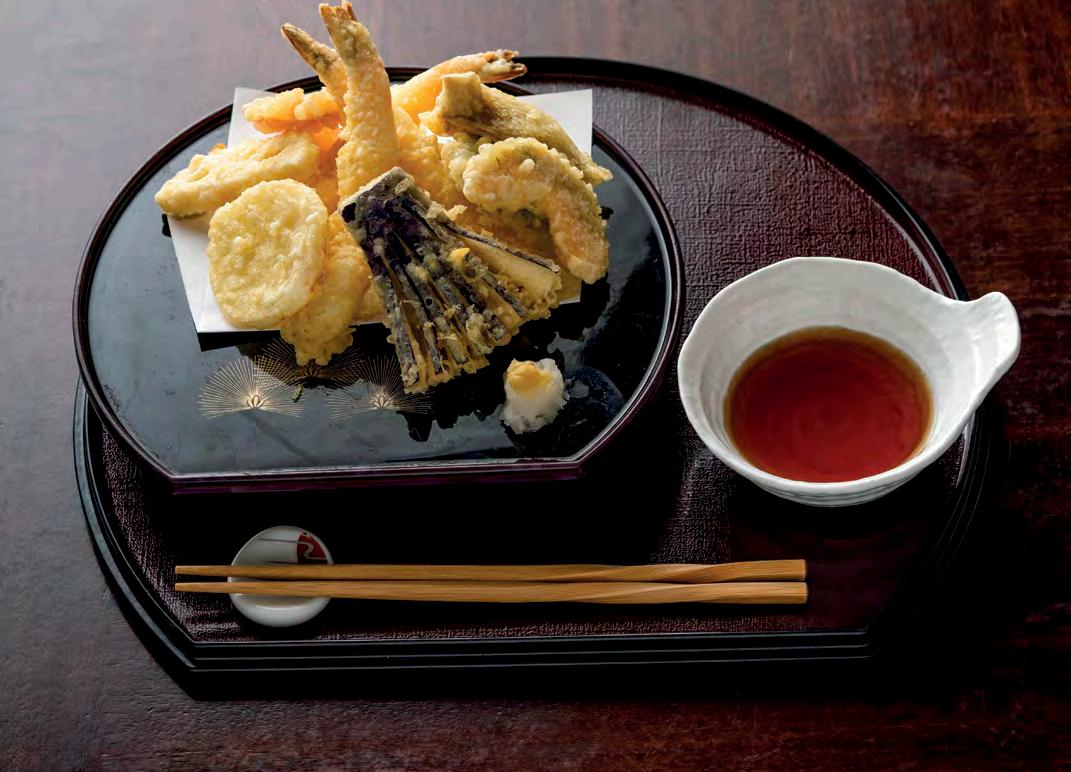


In addition to sushi and maki, two dishes from Japanese cuisine are somewhat more widely known: udon and tempura. For kake udon (top), Japanese wheat noodles are cooked in a hot dashi-based soup. Mixed tempura (above) consists of mixed vegetables and fresh shrimp, which are covered in an ice-cold blanket of breadcrumbs and deep fried. Neben Sushi und Maki sind noch zwei Gerichte aus der japanischen Küche etwas bekannter: Udon und Tempura. Für Kake Udon (ganz oben) werden japanische Weizennudeln in einer heißen Suppe auf Dashi-Basis angerichtet. Beim gemischten Tempura (oben) werden hauptsächlich gemischtes Gemüse und frische Garnelen verwendet, die in eine eiskalte Panierflüssigkeit getunkt und in heißem Fett herausgebacken werden.

Kulinarische Kleinigkeiten wie Seetangsalat, Edamame (Sojabohnen) oder, wie hier links zu sehen, Lachskaviar auf geriebenem Rettich sind für zwischendurch oder als kleine Speisenbegleiter auf der Karte zu finden.
Culinary treats such as seaweed salad, edamame (soybeans), or, as seen here on the left, salmon caviar on grated radish can be found on the menu as a snack or a side dish.
In addition to the refreshing ambience in the restaurant, there are also tatami rooms, on request with kimono service, private rooms or, for the big culinary show, two teppan-yaki barbecue tables. Immerse yourself in the world of Japanese cuisine. Dobin mushi, for example: this clear seafood soup is light and rich at the same time. The soybean is a must because it lends a splash of color. Neben dem erfrischenden Ambiente im Restaurant gibt es noch Tatami-Räume, auf Wunsch mit Kimono-Service, Privaträume oder, für die kulinarische Showbühne, zwei Teppan-Yaki-Grilltische. Tauchen Sie ein in die Welt der japanischen Küche. Dobin Mushi: Diese klare Suppe mit Meeresfrüchten ist leicht und gehaltvoll zugleich. Die Sojabohne als Farbtupfer darf nicht fehlen.

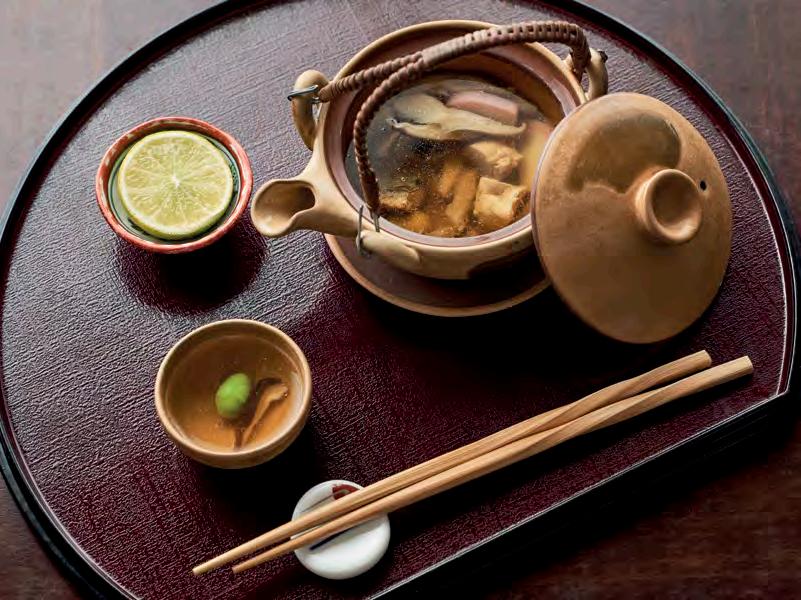
Für den Kontinentaleuropäer ist es gar nicht leicht, ein gutes japanisches Restaurant zu finden, besonders wenn das Land, in dem er sich gerade befindet, keine Kolonialgeschichte mit asiatischer Ausrichtung besitzt. Der glückliche Zufall will es aber, dass die Wiedereröffnung des Grand Hotel Wien im Juni 1993 unter der Ägide von „All Nippon Airways“ stattfand und Wien seitdem ein Restaurant hat, das sich der klassischen japanischen Küche verschrieben hat. „Unkai“ bedeutet soviel wie „Wolkenhimmel“ und dieser Name ist nachvollziehbar, denn nicht nur, dass das Restaurant im siebenten Stock angelegt ist, sondern auch, weil man sich nach einem Besuch ob der Leichtigkeit und Frische der Gerichte „wie auf Wolken“ fühlt.
Diese besondere Leichtigkeit und absolute Frische zeichnen durchgehend die Gerichte der japanische Küche aus. Man arbeitet mit ausgewähltem Material vom Markt in höchster Qualität. Die Konzentration ist auf den Eigengeschmack der Zutaten gelegt, die Wertschätzung des Produkts und die optisch ansprechende Präsentation am Teller ist ein Muss. Nichts ist dem Zufall überlassen, Zeit- und Materialaufwand scheinen keine Rolle zu spielen. All diese Punkte lassen sich hier finden. Wo sonst noch werden zum Beispiel richtig große, bis zu 150 Kilogramm schwere Thunfische im Ganzen verarbeitet? Sie It is not easy as a continental European to find a good Japanese restaurant, especially if the country you’re currently in doesn’t have a colonial history with an Asian orientation. The lucky coincidence for Vienna, however, is that the reopening of the Grand Hotel Wien took place in June 1993 under the aegis of “All Nippon Airways” – and since that time Vienna has had a restaurant dedicated to classic Japanese cuisine. “Unkai” means “cloudy sky” and this name is understandable, because not only is this restaurant located on the seventh floor, but also because you’ll feel “as if on clouds” due to the lightness and freshness of the dishes served here. This special lightness and absolute freshness characterize the dishes of Japanese cuisine in general. It starts with selected, high quality ingredients from the market. The focus is placed on the available taste and aromas in the ingredients themselves, appreciation of the product and a visually appealing presentation on the plate. Nothing is left to chance – time and material expenditure do not seem to matter. These aspects are all available right here. Where else, for example, is a really large tuna – weighing up to 150 kilograms – processed in its entirety? The tuna is sourced, of course, from controlled and sustainable fishing and is immediately dismantled in-house. This allows guests to enjoy, for example, the most sought-after parts of the tuna
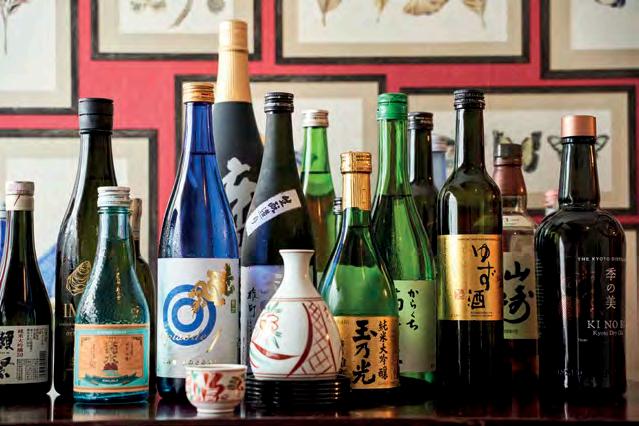
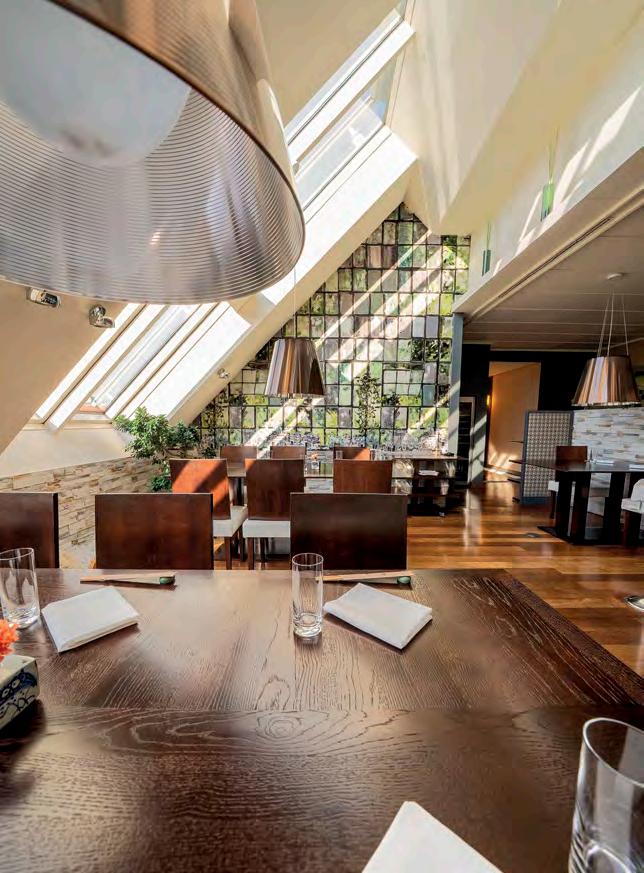
stammen natürlich aus kontrolliertem und nachhaltigem Fischfang und werden sofort im Haus fachgerecht zerlegt. Dadurch können sich die Gäste zum Beispiel auch über die begehrtesten Teile des Thunfisch-Bauchlappens, die „chu-toro“- und „o-toro“-Stücke, freuen. Verständlich, dass viele japanische Expatriates oft Gäste des Unkai sind und vielleicht ist ihnen bei den Besuchen aufgefallen, dass nicht nur die Gerichte den Jahreszeiten entsprechend gekocht werden, sondern auch das Geschirr dem Jahreslauf angepasst wird.
Ein weiteres Faktum für die Anerkennung als authentisches japanisches Restaurant ist die Pflege der SakeAuswahl. Geht es dem Weinkenner um Sorte, Jahrgänge und Boden, ist es bei Sake in erster Linie der Politur-Grad, also wie stark das Reiskorn abgeschliffen wurde, und im Gegensatz zur „kühlen“ Weinherstellung, wird Sake dem Bier ähnlich gebraut. Der Alkoholgehalt variiert von 7 bis über 16 Vol.-%. Sake wird, je nach Typ, warm oder kalt getrunken und genau zu den jeweiligen Speisen passend gewählt. Sollte Ihr Interesse jetzt geweckt worden sein, wählen Sie zum Einstieg einfach die Sakebegleitung. Banzai!
Info
UNKAI JAPANESE CUISINE Grand Hotel Wien, 7. Stock, Kärntner Ring 9, 1010 Wien, Tel.: +43 (0)1 515 80-9110, Öffnungszeiten: Di. –So. 12 –14.30 Uhr, täglich 18 –22.45 Uhr, unkai.at
UNKAI JAPANESE CUISINE Grand Hotel Wien, 7 th floor, Kärntner Ring 9, 1010 Vienna, tel.: +43 (0)1 515 80-9110, opening hours: Tue – Sun 12 p.m. – 2.30 p.m., daily 6 p.m. – 10.45 p.m., unkai.at
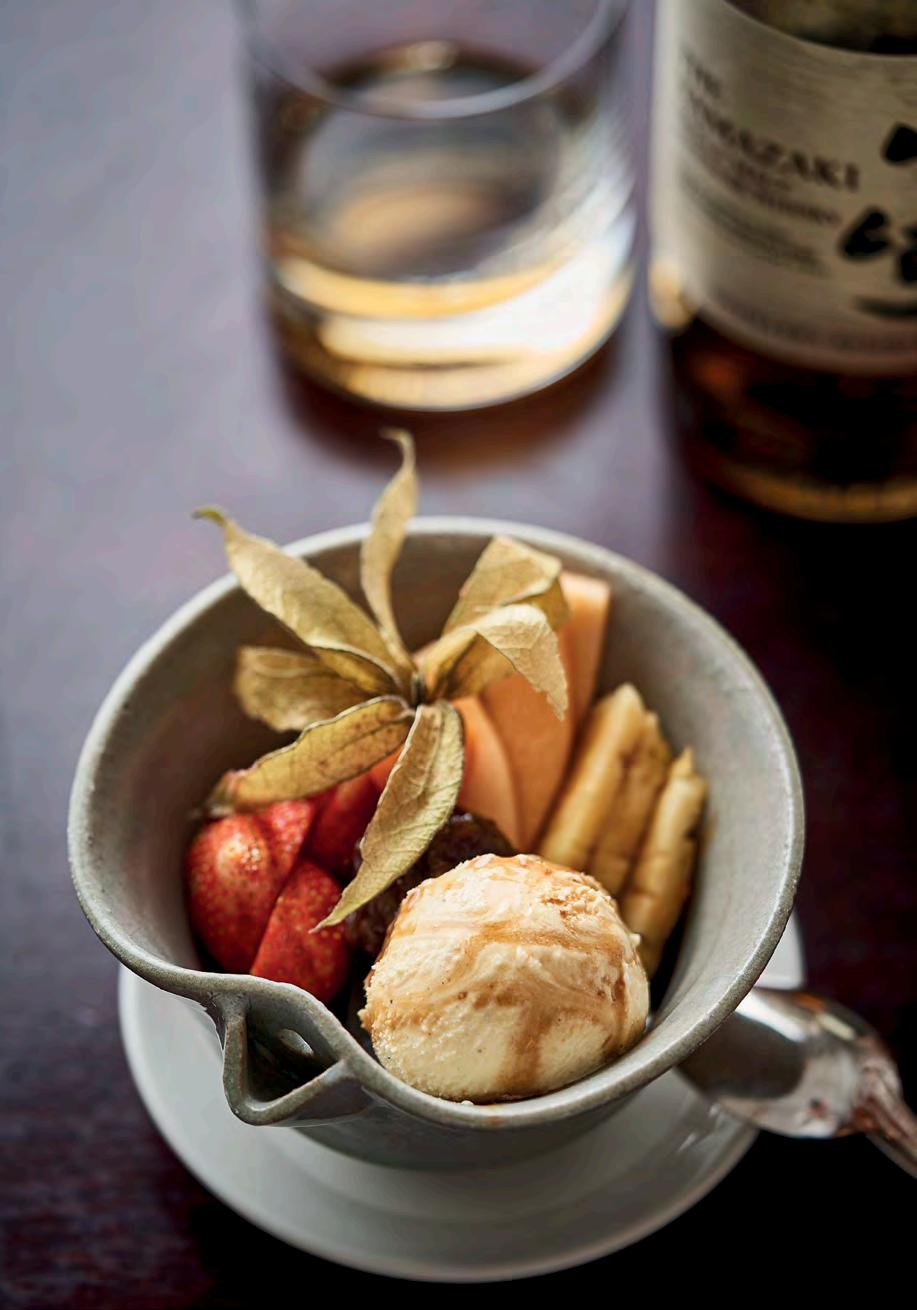
Die Welt der Sake (links oben) ist vielfältig und allemal eine Erkundung wert. Genci Mislimi, Service Manager im Unkai und versierter Experte auf dem Gebiet der japanischen Trinkkultur, hilft kompetent. So empfiehlt er zum Dessert (oben) einen japanischen Whisky.
The world of sake (top left) is diverse and worth exploring. Genci Mislimi, service manager at Unkai and an experienced expert in the field of Japanese drinking culture, can help you navigate. For dessert (above), he recommends a Japanese whisky.
belly lobe, the “chu-toro” and “o-toro” pieces. Understandably, many Japanese expatriates are regulars at Unkai and they certainly understand that seasonal dishes are served and adapted throughout the year. Another facet inside an authentic Japanese restaurant is the care given to the sake selection. When it comes to variety, vintages and soil, sake is categorized according to the degree of polish: literally, how fine the rice grains were polished to achieve the desired results. Unlike the “cool” wine making process, sake is brewed similar to beer. The alcohol content varies from 7 to over 16% AbV. Sake is imbibed warm or cold, depending on the type, and can be precisely paired with the meal. If your interest has been aroused, just choose the sake accompaniment and get started. Banzai!

